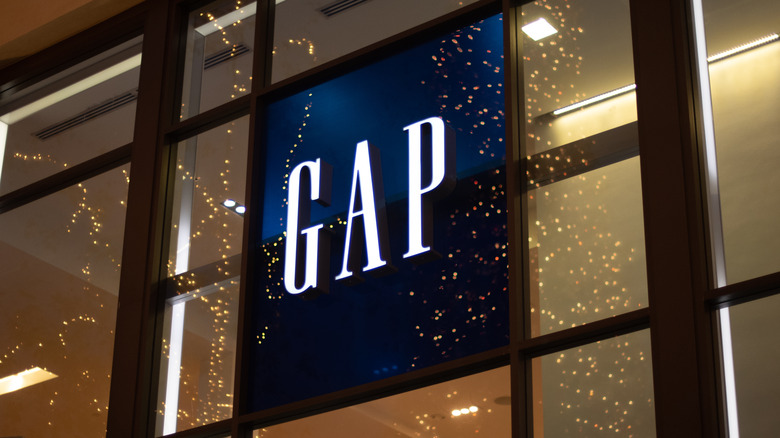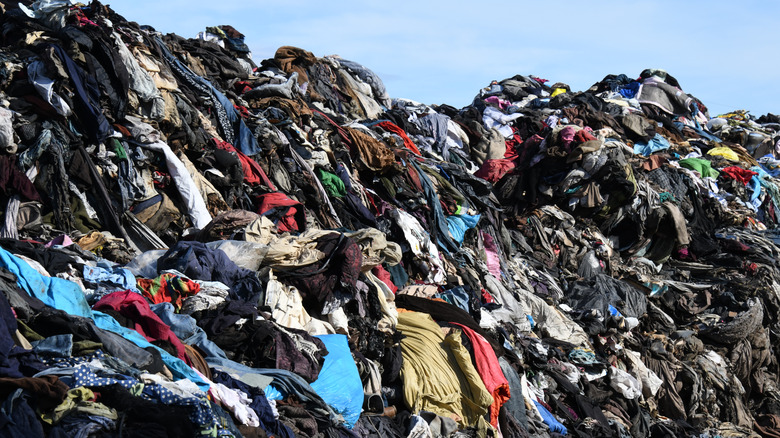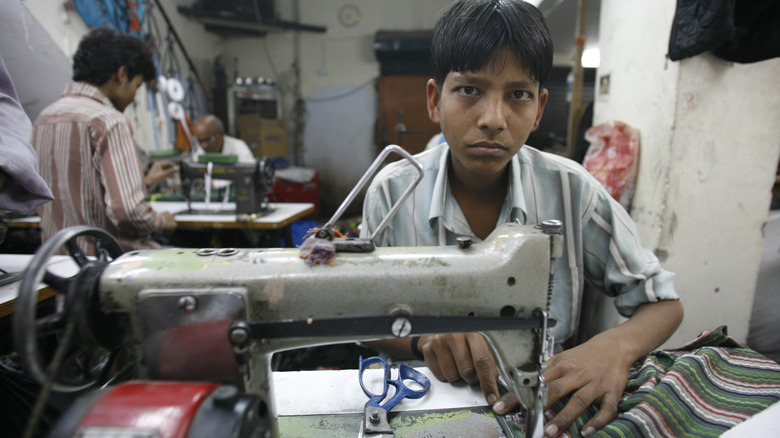The Reason You Should Avoid Shopping At Gap
Although the term "fast fashion" feels relatively new, it's been around since the 1800s. Fast fashion is affordable yet stylish clothes that go from the design room to retail stores extremely quickly, allowing for new designs to constantly be in rotation (via Investopedia). Unlike haute couture, French for "high dressmaking" where pieces are limited and often extremely expensive, fast fashion markets itself to mainstream consumers who can't afford the luxury of, say, a $4500 Gucci dress. Dare to dream, right?
While fast fashion has its purpose, from a consumer standpoint, it's downright horrible for the environment and is an overall exploitative industry. According to findings, 26 billion pounds of clothes end up in landfills every year alone, per Sustainable Brands. Not only is this waste piling up and up, but the chemicals used on clothing — especially fast fashion items — release toxins into the air and can pollute water supplies. These clothes are outsourced and made in countries like Cambodia, Bangladesh, and Myanmar where workers made an average of $147 a month in 2021, according to BoF. That monthly amount comes amid unsafe working conditions, 12+ hour days, and very few days off.
Although Shein made headlines recently for their working conditions and the fact that it manufactures over a whopping one million clothing items in a 12-month period, they're certainly not alone, Insider reported. In fact, brands that you may have loved your whole life are just as guilty of similar offenses — one of those brands being Gap.
Its commitment to the environment is debatable
As of 2020, Gap is the fourth largest retailer in the world making $16.58 billion annually (via BizVibe). That's a lot, like a lot of clothes, most of which will eventually end up in landfills. According to The True Cost, the average American somehow manages to generate 82 pounds of textile waste every year. While some brands have made efforts to be more sustainable or have made promises to reach sustainability at a time in the near future, like Levi's and Adidas, Gap still isn't clear on what they've done so far, as Glamour noted.
Gap had promised to reduce its greenhouse gas emissions by 50% by the time 2020 rolled around, but never confirmed if that happened. They also stated in a 2020 release that they were "committed to using 100% clean energy by 2030," but we still have eight years to see if that comes to fruition. Gap has also been less than forthcoming about where some of their materials are sourced for their garments, pointing out that their part in the sustainability movement in fashion is "meaningful progress," rather than being "perfect" (per Drapers).
Its manufacturing practices are really questionable
In 2007, a bomb was dropped when a 10-year-old boy was filmed making a blouse in a factory that manufactures Gap clothing. An investigation by The Observer found that Amitosh, and other kids, were bought from their parents and taken to New Delhi where there was no food and they worked 16 hours a day for free.
"I've been told I have to work off the fee the owner paid for me so I can go home, but I am working for free," Amitosh told The Observer. Dan Henkle, a spokesperson for Gap, released a statement saying: "These allegations are deeply upsetting . . . We firmly believe that under no circumstances is it acceptable for children to produce or work on garments" (via ABC News).
Gap cut ties with the factory, but as of 2022, the brand is still using sweatshops where 16-hour days are the norm and workers make less than minimum wage (per Panaprium). In 2018, Global Labor Justice published reports in which workers in factories that supply clothing to Gap attested to physical and sexual abuse against young women.
Gap is just one of several brands with shady behavior. But there are other brands out there, brands that are ethical and sustainable, so it's worth doing your research if these examples of questionable practices aren't on par with what you believe to be right. After all, you want to make sure you're spending your money on brands that are actually worth it.


